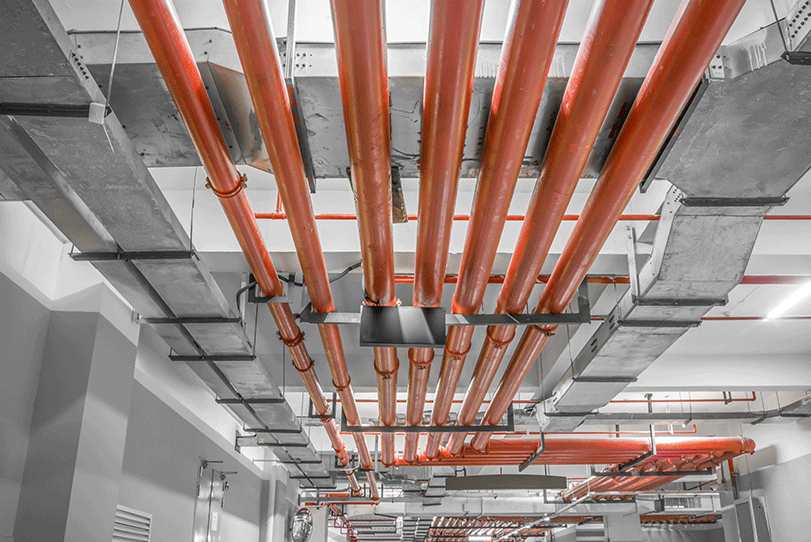While working in HVAC industry can be very rewarding, there are important safety considerations to keep in mind. Here are a few important safety tips for HVAC Technicians or Contractors.
Today, choosing profession in the heating, ventilation, and air conditioning (HVAC) industry is becoming increasingly lucrative especially in the country like India where urbanisation is taking place in rapid pace. However, as HVAC technicians often work with dangerous chemicals and electrical systems that can cause harm if not properly handled, they need to strictly adhere to safety guidelines all the time.
From a safety point of view, the most critical component in operational terms is also the one that requires more protection than the others. For example, in HVAC systems, this component may be the compressor, which creates the flow of fluid in the refrigerant circuit. According to Daniel Chen, CAREL – APAC Marketing Manager (HVAC), compressor failures are prevented not only by correctly sizing the component itself, but also by ensuring that the component never approaches conditions in which there is a high likelihood of damage. “The main problem involves the locked rotor phenomenon, which could lead to sublimation of the insulation and voltage being distributed directly on the unit’s casing, endangering maintenance personnel or the end user. To avoid this, it is necessary to understand the phenomenon, define it, assimilate it and finally propose preventive solutions,” Daniel suggests.
He adds, “There are different methods to protect the unit so as to reduce or almost totally eliminate the risk that a malfunction may cause damage: equip the system with pressure and temperature sensors, safety contactors and a circuit breaker, or integrate safety as part of the control logic. For this reason, whatever method is chosen, the important thing is the awareness that the system purchased is reliable and certified in compliance with all applicable standards, proof that the principle of safety has been applied as a precautionary design measure for the user, and not as a precaution for the manufacturer.”
Gaurav Mathur, Associate Vice President – Sales Development (Building Services) Grundfos India lists some of the measures to be adopted to improve the safety in building as:
•Strict adherence to the regulations, standards and building codes.
•Maintaining Organizational Safety and Health (OSH) policy and culture.
•Conducting regular trainings for engineers, technicians and staff on technologies, OSH and soft skills.
•Engagement of staff in continuous improvement of processes.
•Use of automation and digital tools to enhance the safety standards of a building.
•Thorough investigation of minor incidents such as “near miss” etc. must be conducted.
Neeraj Gupta, Senior General Manager – Living Environment Division, Mitsubishi Electric India explains some of the important do’s and don’ts safety tips for HVAC technicians and contractors:
Do’s
Always use certified cylinders and equipment for brazing activity.
Always discharge the pressure before fixing the leakage/replacement of parts.
Dry nitrogen must be used for leak detection/flushing.
Pressure gauge, regulators must be incorporated with cylinders.
Brazing work to rectify leak/replacement must be started only after pressure has been fully released from the system.
Employees, working with compressed gases must be trained and follow procedures.
Always conduct pre-start self-inspection
Always perform work with required tools and Personal Protective Equipment
Always follow safety guideline of each activity.
Always follow standard procedure for leak testing/vacuuming/refrigerant charging.
Always release the pressure before attempting to fix the leak/replacement of parts.
Always follow LOCKOUT TAGOUT procedure
Always pre-check all equipment’s for proper functioning before the start of the work.
Always wear the chemical (Nitrile)Glove while touching any Refrigerant Circuit
Always perform the S.A.F.E. Scan, Assess and Fix the identified hazard.
Always follow the OEM rules and procedures.
Always use certified tools & tackles with SWL tested and certified.
Don’ts
•Never heat the system under pressure (nitrogen or refrigerant).
•Never use LPG portable can cartridge/burner for brazing or heating purpose.
•Never use oxygen for any testing it is prohibited/not allowed.
•Never heat the system which is under pressure.
•Never work with defective equipment.
•Never perform work without adequate knowledge with work.
Further, safety, health and hygiene of construction workers and technicians are of utmost importance in a project. It is important to have all safeties and securities in place and followed strictly, suggests Varun Pahwa, President, DRI – Pahwa Group. He adds, “When designing and constructing cost-effective buildings, it is important to maintain the sanctity of the design and product specifications. The success or failure of a project may rest on its indoor environmental quality (IEQ). Healthy, comfortable employees/inhabitants are often more satisfied and productive.”
Cookie Consent
We use cookies to personalize your experience. By continuing to visit this website you agree to our Terms & Conditions, Privacy Policy and Cookie Policy.















